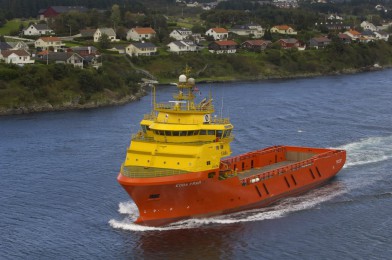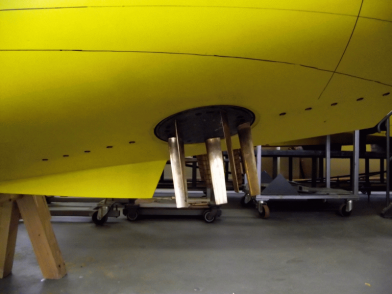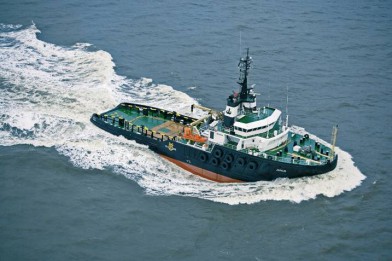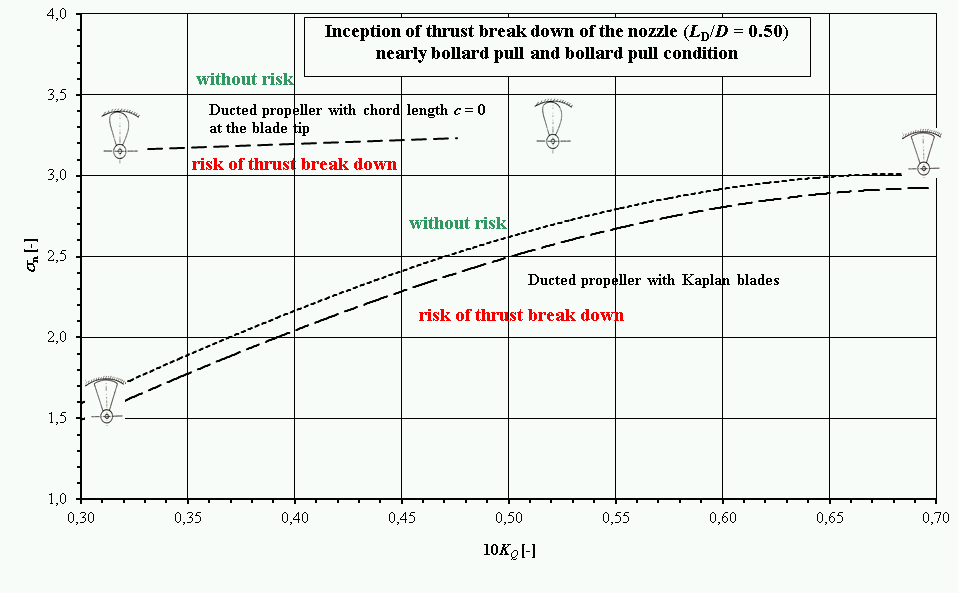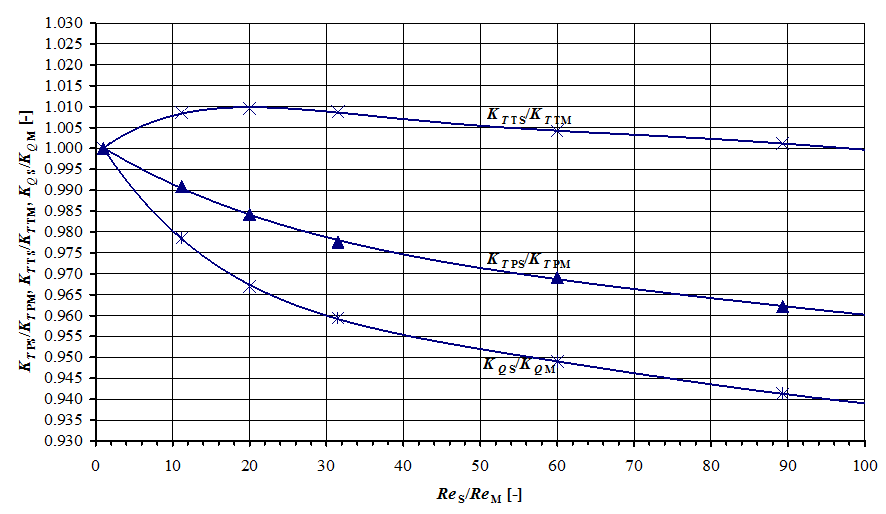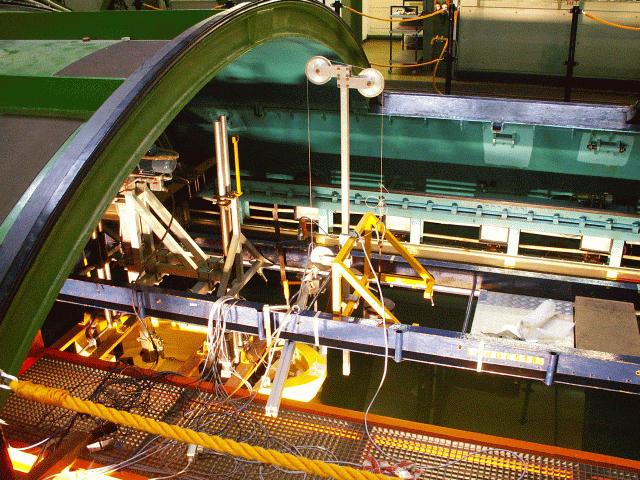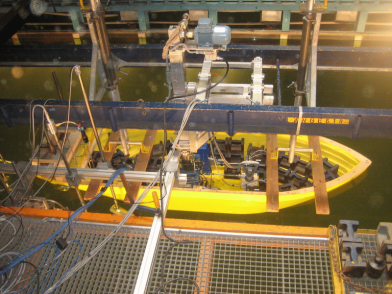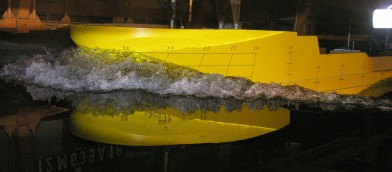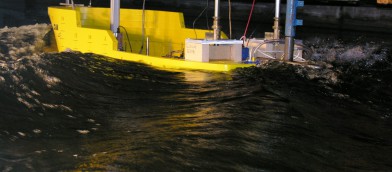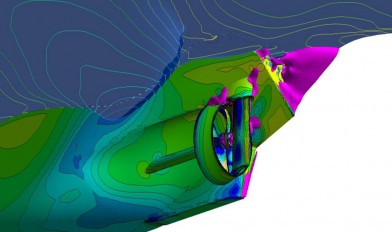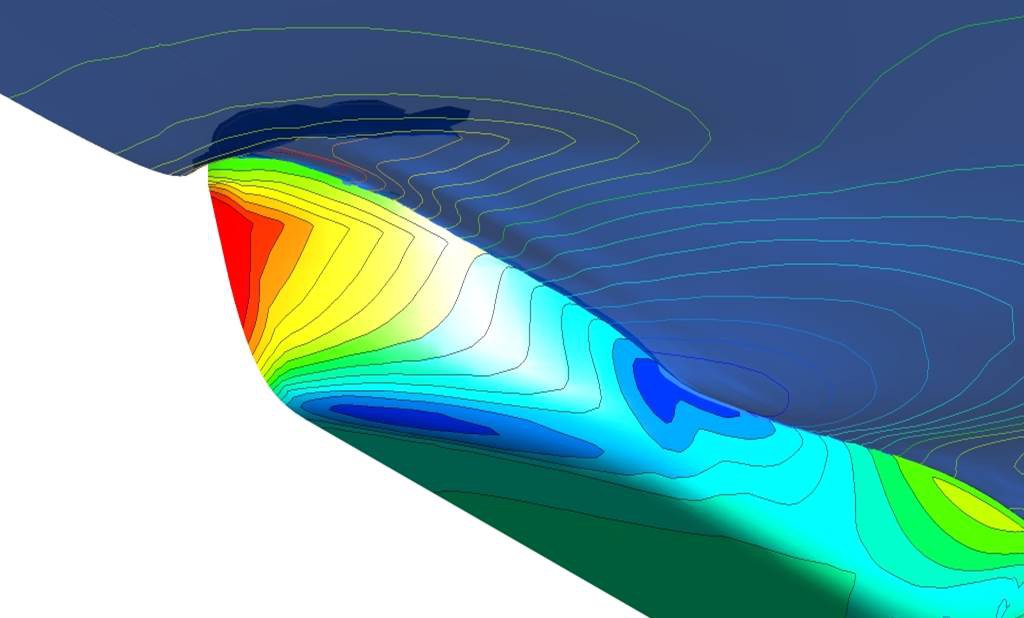Within the framework of various research projects and industrial contracts [1], [2], [3] an extensive investigation of such ship propulsion, with VSPs or with thrusters, were performed. Thus the SVA Potsdam can offer options from a wealth of experience, for example regarding influence of the blade geometry or installation conditions. In addition to resistance and propulsion analysis, manoeuverability and seakeeping investigations for these vessels can be carried out at SVA Potsdam [4], [5].
Context Related References / Research Projects:
[1] Grabert, R.: Analysis of the Interaction VSP – Hull of Modern OSV, 4th Voith Symposium, Heidenheim, 12. – 14. Juni 2012
[2] Heinke, C.: Offshore Support Vessel mit zwei Voith Schneider Propellern, Bericht 4310, Schiffbau-Versuchsanstalt Potsdam, Dezember 2014 (Abschlussbericht)
[3] Heinke, C.: Investigations of OSV with VSP propulsors at SVA Potsdam, 5. Hydrodynamisches Symposium on Voith Schneider Propulsion, Heidenheim, 30.09. – 02.10.2014
[4] Heinke, C.: Offshore Support Vessel mit Voith Schneider Propeller, 8. SVA-Forschungsforum, Potsdam, 29. Januar 2015
[5] Steinwand, M.: Dynamic Positioning mit Motionstabilisierung („DP Motion“), 8. SVA-Forschungsforum, Potsdam, 29. Januar 2015
Tug Boats
In R & D projects “Correlation of Z-drive with Ducted Propellers” the findings in the field of CFD calculations have been successfully applied for the systematic numerical investigation of ducted propellers [1]. The established references and procedures for Reynolds number correction are an important basis for the evaluation of experiments with ducted propellers or thrusters with ducted propellers to full-scale. In the R & D project “Increasing the Design Reliability of Ducted Propeller Systems at Bollard Pull Conditions” and ” Reynolds Number Effects on the Bollard Pull Prediction” the process of bollard pull prediction with tugboats having a ducted propeller arrangement was analysed [2], [3]. In particular, the findings related to the cavitation thrust break down of the ducted propeller at high load levels are now an integral part in the design process of propulsion system. With the chart worked out by the SVA for estimating the risk of cavitation induced thrust break down, the need for cavitation testing can be determined.
Extensive investigations of cavitation on the propulsion systems of tugs were conducted in the cavitation tunnel of the SVA and the large circulation and cavitation tunnel (UT2) of the TU Berlin [2], [3], [4], [5]. Among others, bollard pull tests with cavitation similarity between models of Voith Water Tractors and AHTs (VWT) were conducted. In the R & D projects “Forecasting Reliability for the Power Requirement of Tugs with Ducted Propeller Systems”, geosimulation experiments and comprehensive CFD calculations were carried out. These results were used to analyse the scale influences on the propulsion prediction for tugs. The results of measurements and calculations were compared with full-scale measurements of AHTs and integrated into the predicting procedures.
Context Related References / Research Projects
[1] Abdel-Maksoud, M., Heinke, H.-J.: Scale Effects on Ducted Propellers, 24th Symposium on Naval Hydrodynamics, Fukuoka, Japan, 2002
[2] Mertes, P., Heinke, H.-J.: Aspects of the Design Procedure for Propellers Providing Maximum Bollard Pull, ITS 2008, Singapore, 2008
[3] Heinke, H.-J., Hellwig, K.: Aspekte der Pfahlzugprognose für Schlepper großer Leistung,104. Hauptversammlung der Schiffbautechnischen Gesellschaft, Hamburg, 2009
[4] Heinke, H.-J.: Model tests with Voith Schneider Propellers at high thrust coefficients, Hydrodynamic Symposium – Voith Schneider Propulsion, Heidenheim, March 2006
[5] Heinke, H.-J.: High-Speed Camera Observations of the Cavitation at a Voith Schneider Propeller, 2nd Symposium Voith Schneider Technology, Heidenheim, June 2008
[6] Heinke, H.-J., Grabert, R.: Influence of the Reynolds number on the characteristic of ducted propellers, 68. Sitzung des FA “Schiffshydrodynamik” der STG, Hamburg, 08.10.2014
Power Prognosis
The performance prediction is the basic task of model basins.
Performance Prediction Based on Model Tests
With the aid of model tests the required propulsion power for all types of vessels is determined. The classic performance prediction is based on
- resistance tests
- open water tests
- and propulsion experiments.
As a result of these tests, all performance parameters can be identified. The extrapolation of the model test results takes place either without determining the form factor, or in accordance with the ITTC 1978 Performance Prediction Method with form factor. Both methods are well established and provide reliable results for the most cases. The SVA performs the propulsion tests by applying the British method.
Prerequisite for the extrapolation of the test results is high accuracy in measuring and in the model finish. The SVA complies with the requirements of the ITTC (International Towing Tank Conference) for all areas of the test system. Advanced measuring and analysis technology helps the test engineer and reduces the time required to carry out the tests. The experimental results and procedures are continuously verified and validated.
Performance Prediction Based on Statistical Data
Based on the SVA database and various empirical methods the SVA Potsdam is able to create a quick performance prediction [1]. This enables a first estimate of the power requirement of a watercraft in the early design stage.
Performance Prediction Based on Viscous CFD Calculations
In viscous CFD simulations (Computational Fluid Dynamics), the flow about the geometry and the resulting resistance and the wake field will be calculated in the scales of full size and / or the model scale. Based on these calculations the potential of possible improvements of the ships lines can be detected. In order to include the effect of the working propeller on the ship resistance, the propeller effect can be simulated or the real propeller geometry taken into account in further CFD calculations. From the calculated resistance within given propulsion conditions or from the calculated torque, the delivered power can be determined. If no custom propeller data is available, the polynomials of the Wageningen B-series are alternatively used for this purpose.
The performance prediction based on viscous CFD calculations [2] is for many cases an alternative to model testing, especially when only individual operating points are required. The results can still be used for general ship evaluation, motor design, and as a basis for the propeller design.
Context Related References / Research Projects
[1] Grabert, R.: Ein Verfahren zur Leistungsprognose nach Vergleichsschiffen, Schiffbauforschung 31(1992)1
[2] Rieck, K., Hellwig-Rieck, K.: Numerische Propulsionsprognose von Schiffen, STG-hauptversammlung, Rostock, November 2011
Ship Hull Optimization
Please read here more about simulation driven hull optimization.
